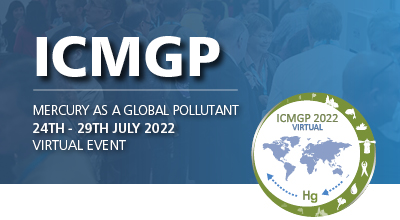| Abstract Title: | Mercury in Ultraoligotrophic Deep Lakes of Andean Patagonia |
| Presenter Name: | María C Diéguez |
| Company/Institution: | CONICET-INIBIOMA |
| Session: | Mercury in Freshwater Ecosystems |
| Co-Authors: | Rizzo, A.; Queimaliños, C.; Arcagni, M., Perez Catán, S., Soto Cárdenas, C., Ribeiro Guevara, S., María C. Diéguez |
Abstract Information :
Ultraoligotrophic lakes of Andean Patagonia show variable levels of total Hg (THg) in water and moderate to high levels in sediments, from natural sources. Elevated THg to dissolved organic carbon (DOC) ratios, determine high THg availability in the water column. Interestingly, THg levels in fish are far higher in benthic feeders than in pelagic foragers, indicating that lake bottom has particular conditions promoting differential Hg bioaccumulation. This investigation assessed the behavior of THg in the water column, sediment-water interphase and porewater in relation with dissolved organic matter (DOM) concentration and quality in two warm monomictic deep lakes, Moreno East (ME) and Moreno West (MW). Littoral, sublittoral and pelagic sites (Zmax: ca. 20, 40 and 100 m, respectively) were sampled during stratification (April) and mixing (November) periods. THg and DOC concentrations were measured in samples from the water column, water-sediment interphase and porewater, using Cold Vapor Atomic Fluorescence (CVAF) and combustion catalytic oxidation, respectively. DOM was characterized through optical techniques. THg levels and DOC concentrations were highest in porewater followed by interphase and lastly by water column samples, regardless spatial (between and within lakes)/temporal differences, suggesting potential diffusion from the sediments. DOC-THg concentration showed idiosyncratic patterns among lake compartments, however, THg levels related positively with DOM allochthonous optical signals, particularly in littoral and sublittoral areas and during mixing periods which coincide with high runoff. During stratification, higher THg levels in porewater extracted from sediments of the deepest zone concurred with changes in redox conditions likely promoted by lower O2 levels. Similarities betwen THg patterns found in ME and MO lakes highlight the importance of stratification/mixing processes and seasonal allochthonous inputs as regulators of THg levels in different lake compartments. This behavior could be extrapolated to other deep Andean lakes with similar Hg impact and climate seasonality in their catchments.



